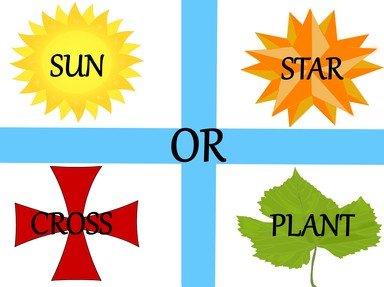
Sun, Star, Cross or Plant? Trivia Quiz
National flags are patriotic symbols that began as heraldic devices during battle. The colours and emblems are chosen for a purpose to represent their country. This quiz refers to the symbols or emblems that appear on some of them.
A classification quiz
by Midget40.
Estimated time: 3 mins.